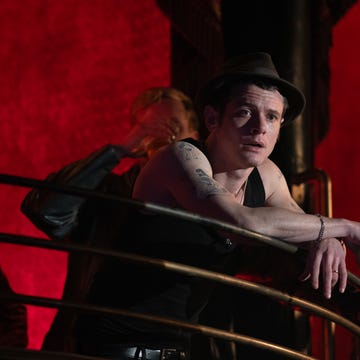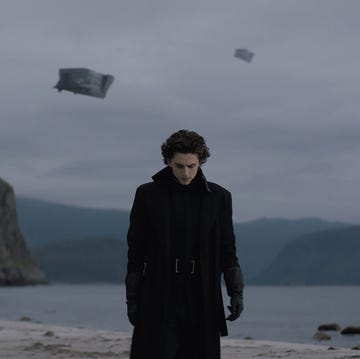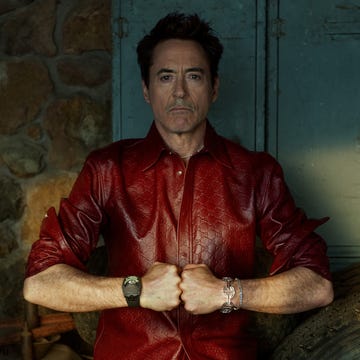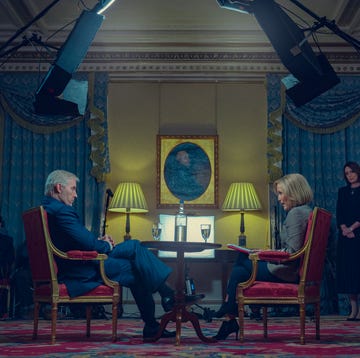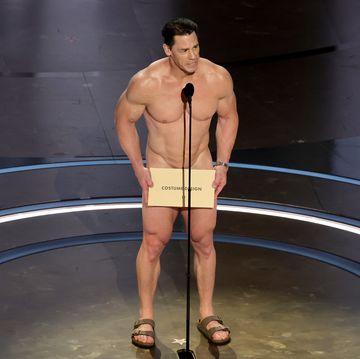The 10 Best Fictional Battles
Guerrilla wars that never were, retellings of history, and epic battles of pure fantasy

Endless internet lists examine the most accurate Hollywood battle depictions, ones that adhere to the actual battles they portray. The verdicts are unforgiving, measured with sympathy for filmmakers who bend the truth to tell a story. But what about when moviemakers can craft an entire battle from scratch?
Fictional battles created with realism, logic, and intelligence are hard to come by. The absurd military vehicles and small unit tactics of The Empire Strikes Back are even dumber to behold than the lack of armor on the Spartans of 300. Because of these accurate battles are such a rarity, they deserve a list all their own.
A quick note on the criteria. First, I included shootouts as "battles" to expand and vary the list. Second, only fictional battles are considered (with one exception, which is explained.) Finally, this is not a list solely based on technical accuracy. The actions and context of battles weigh more heavily than accurate depiction of gears and weaponry.
So in no particular order, these are the best fictional battles ever created.
[NOTE: Some videos below show graphic and violent scenes. This is a list of best battles after all.]
Helm's Deep—"The Lord of the Rings: The Two Towers"
The strategy of Helm's Deep in The Two Towers may be simple to describe but it's incredibly nuanced in execution. There's a vast army trying to crack a hold defended by a small multinational (elves and men) troop of soldiers and conscripts. All that's really stopping them from flooding the defenders is a thick wall that reduces their strength of numbers. Less appreciated is the geography where the fort is located, burrowed in where steep canyon walls force invaders to attack from only one direction.
Much of what is good of this battle is courtesy of the Tolkien book, including the political backstory that prompts the over reliance on a castle for national security. The fight itself, presented with gritty vigor, is a textbook example of the blessing and curse of assuming such a defensive position. Walls take options from your enemies, but they also take tactical options from any defenders. It's hard to surprise someone when you don't have the ability to maneuver. The fight is conducted when your enemy wants it. This timing allows an attacker to devise some ways to knock down those walls. And most of the time, clever engineering and brute force get the job done. (That is, when starvation and disease don't do it.)
When Saruman employs an explosive mine to a weak spot in the walls, the fate of the stronghold seems sealed. One penetration and an entire wall is rendered useless. In the film, little touches help sell the visceral reality of this fantasy battle, including some well-designed siege ladders, psychological insights into the ways armies pump themselves up before a suicide charge, the use of child soldiers to employ low tech weapons (rocks) and, above all, cinematography that conveys the chaos of battle without confusing viewers.
Guerilla Warfare—"Red Dawn" (1984)
Red Dawn is a classic premise film. What if the Russians and Cubans invaded the United States, the way the Soviet Union invaded Afghanistan? Would young Americans become insurgents, and what would that do to their lives? The movie is a procedural exercise in partisan warfare, a cycle of raids on invaders and repercussions on civilians.
Guerillas are outnumbered and must hide to live. The occupying force is homesick and don't understand the land they're fighting over. Warfare between superpowers has bogged down to a slow, churning grind. There's a lot that can be dissected here, but the depiction of two ambushes put this movie's approach into perspective. The first, early in the film, shows a couple of lonely Soviet soldiers flirting with an American girl and stealing her picnic basket. When the basket explodes, and the girl revealed to be a guerrilla, the soldiers chase after her. Partisans pop up from "spider holes" and riddle the soldiers with bullets. The sneaky approach, predictable reactions, and the sudden violence all come off as plausible and doctrinally correct.
The Russians are inflexible at first but learn how to gather intel on the guerillas and attack them from unexpected directions. That includes using family to recruit infiltrators and setting up ambushes of their own. The most effective Soviet scheme uses an abandoned pallet of food as bait and helicopters to attack the guerrillas as they eat.
Helicopters made all the difference in fighting an insurgency. An occupying force can cover a large amount of ground, find targets, and attack them on the spot with heavy firepower. An insurgent's best defense is to run and hide, but modern helicopters are hard to flee from.
Here's a clip of Russian helicopters fighting ground troops in Syria in 2016. The low altitude is reminiscent of Afghanistan, but the erratic movement of the helicopters is new and meant to defeat heat seeking shoulder-fired missiles.
Urban Shootout—"Heat"
Guns in movies are often treated as equivalent. Heroes can plunk off bad guys with a machine gun as if it's a pistol. Rounds from assault rifles bounce off wooden doors like tiny .22 bullets, instead of punching through like Chip Gaines. But not all guns are equal. They convey specific benefits and liabilities in a gunfight.
Nowhere are these stark tactical differences on bigger display than the urban shootout in Heat. A handful of gunmen, armed with heavy weapons, square off against a small army of police officers armed with shotguns and handguns. Now, Hollywood franchises and Chinese action movie directors (John Wick and John Woo) have conditioned viewers to expect two classes of gunmen, super-killers and their moving, bleeding targets. In Heat, the bank robbers are superior on the battlefield not because they are supermen, but because they have superior firepower and know how to apply it. Their targets are not breaking cover to be cut down dramatically.
In Heat, the tactical situation is pretty simple. The bank robbers' car and wheel man have been taken out, and the squad of experienced crooks needs to move down the street, break a police cordon, and hijack a getaway car. One gunman applies heavy covering fire, keeping the cops cowering as another robber dashes toward the defensive line of police. The reason they can do this is and get away because the robbers' assault rifles have longer range, more accuracy, a faster rate of fire, and more deadly impact than the police shotguns and pistols.
This incident is based on an incident in North Hollywood, Los Angeles. Then, police responding to a bank robbery were so outgunned by robbers using illegally modified AR-15s, that the police raided a gun shop for semi-automatic weapons. (Well-armed SWAT teams also arrived in an armored car, balancing the scales. The two gunmen didn't escape.)
In Heat, the squad of detectives tracking the robbers arrives with bigger guns and manages to engage the robbers on equal footing. They also show up knowing the intensity of the situation, whereas the police responding to the robbery face a hail of withering fire without warning.
Sea Battle—"Master & Commander: The Far Side of the World"
In a movie filled with excellent character studies and sharp details of life onboard a warship in the early 1800s, Master and Commander also sets up a subtle dissection of England's warrior class. Living with the crew, an audience gets to know them and the rhythm of their lives at sea. Formal titles, duty, and discipline help hold the crew of the Surprise together during the long, lonely challenges at sea. The reliance on rank and naval custom does not come without a price, measured in floggings, friendships, and lives. But the polite interactions and raucous celebrations of life onboard makes the final battle all the more shocking.
These gentlemen are savage warriors. The crew, who we've come to know as fairly reasonable people, opens a box of grenades, firearms, swords, and axes and proceeds to mince the French crew in close quarters combat. Captain Jack Aubrey, who enjoys playing music and getting drunk with his officers, sets up a devious trap to draw in a superior ship. His steward, and the film's comic relief, is revealed to be a berserker in combat. Even the doctor, a naturalist, surgeon, and advocate of Enlightened positions, gets his sword wet with blood.
It's an awesome and terrifying display of naval combat, but also of the transformation of men during battle. The attack succeeds, and only then when the blood fever fades, does the human price become clear. Everyone on the Surprise seems sad and hungover, each like a man waking up from a night's rampage as a werewolf. It's a cycle of violence and aftermath that the movie enables viewers to experience, rather than simply watch, granting this great period piece a more universal feel.
Battle of Stirling—"Braveheart"
The Battle of Stirling Bridge in Scotland happened in 1297. The one in the movie Braveheart doesn't come close to showing it accurately, so much so that the fight can be included on this list of fictional battles. In reality, the Scots used a bridge to slow the English forces, mooting the effect of their superior cavalry. The movie has no bridge, which was the main strategic factor of the actual fight.
Instead of the real battle, the filmmakers set up a whole new fight, one that works well as an exercise of filmmaking and equally good when it comes to walking viewers through the events in an intelligent way. The English are cocky, and why not? Their heavy cavalry is the backbone of a war machine that literally never loses a battle. The Scots break this charge with a simple but effective piece of tech: Long spears that stop horses in their tracks. (This is not so far off from history, actually, since the Scots did use long pikes to repel cavalry charges at Stirling Bridge.)
William Wallace also uses the English cockiness and predictability to set up a classic ruse – retreat and then strike at the foes from an unexpected direction when they push forward. When the English commit to the attack, the Scottish cavalry that supposedly has fled the field has actually circled around to savage the English archers and command units in the rear. The plan is simple to execute but devastating in its result: an inferior force has devised a plan using solid, simple tactics that enables them to beat a superior foe.
The Scots are good fighters, but the battle is not won by brute strength but good planning. "First, you learn to fight with this," Wallace's uncle says, pointing to young William Wallace's head. The movie shows viewers what that actually means.
Gun Battle—"The Way of the Gun"
Never mind that the desperate drifters in this movie have a small fortune in firearms, even as they donate sperm for money just to get by. These are the tools of their trade, and hence the movie's title. There's a lot of gunplay in the film, including an interesting, extended shootout at its conclusion.
But the first gunfight is the movie's best thought out fight scene—a 2-on-2 running battle between the kidnapping duo and the armed guards protecting her. Other movies (like Hard Boiled and Die Hard ) use bullets in replace of dialog, but in the Way of the Gun's first shootout is more of a debate. It's all about movement, smart use of concealment, clever distractions, and sudden flares of violence. Movies where people stand in one spot and shoot at at one enemy is already suffering from a lack of imagination. Shoot and scoot is a much smarter way to fight.
Also interesting: The psychology that the kidnappers use to finally win the battle. Like a major league pitcher setting up a batter with a curve ball after a series of sliders, the drifters repeat their behavior by zipping around corners in a slowly moving car and leaping from the vehicle to pop off a few shots. After a few repeats, the guards expect the same pattern to repeat, only to be slammed by the robbers' car as the guards turn a corner. This focus on brains over brawn is a hallmark of a good fictional battle, whether it involves four people for forty thousand.
Ship-on-Ship Warfare—"Battleship"
OK, so it's a Hasbro board game. The filmmakers somehow created a premise that matches the tactical situation of the tabletop. No air power, just battleships slugging it out with missiles, and more true to the source material, big deck guns. So what if one is an alien vessel? Who cares if the dialogue is cheesy? The actual fighting has an air of veracity that you don't expect.
From the use of over-the-horizon boats to the defensive CWIS (the Close In Weapon System, a chain gun that can shoot down missiles or aircraft that come close to the ship), the action here has a retro feel that capture the duels of large vessels. The movie's battleships do what battleships have been made to do: kill other ships and bombard the hell out of enemy installations on shore. There are moments that capture the particular hell of modern naval combat better than any other movie. Namely, the moments when you know there are too many inbound weapons for your ship's defenses to handle, leaving a sinking feeling that terrible violence is about to erupt.
Some subtle acting and screenplay deftness (in a film not known for either) conveys the fear, frustration, and resignation of being targeted by modern anti-ship weapons.
Ambush—"Vikings"
History Channel's show Vikings is no documentary, but it's a smart piece of storytelling nonetheless, and in the second episode of season 2, a show based on myth totally nails the shield wall.
Violence is such a vital part of the program, so it's essential that each fight have its own flavor and feeling. Despite that demand, the skirmishes, battles, and one-on-one duels stay smart, brutal, and grounded. The best, perhaps, is an English ambush on the warband. We'd seen the Vikings on the attack numerous times, sometimes against unarmed victims, so it's cool to see how they act to regain the initiative.
The English launch the attack on the Vikings as they lounge near a river, a surprise designed to shock them as much as inflict damage. The sea raiders quickly rally, however, and form the famous shield wall. We've seen that, too, but in this case they clump together in several smaller shield walls. Anyone outside the wall is hit with the arrows, but together the turtle-style defense is solid. The ambushers move in, knowing their foes are weaker while separated. The shield walls hold, however, with much groaning and poking with sharp things.
The least fortunate English soldiers are sucked into the shield wall, where they are hacked to pieces. The disparate shield walls reform into one, which reduces the attackers' strength enough so that the Vikings can abandon the wall and finish them off in a rush. The see-saw battle is written on the actors' faces, as the Vikings go from surprise to fear to confidence and then joyous victory. Again, fortune favors the smart, the tough, and the well trained.
WWII—"Saving Private Ryan"
The climactic battle in this World War II blockbuster is edgy, brutal, and bloody. The basics are easy: outgunned dismounted infantry need to hold a bridgehead against a tide of German armored vehicles. It's also a good example of the matchup of armor versus infantry. You'd think that a soldier has no hope against an armored vehicle, but the reality is different. Tracks can be disabled, halting an entire advance. Snipers can target commanders who are watching from open hatches. Personnel carriers become death traps.
All of these tactics can be more easily achieved in a city, where tanks are more vulnerable. Here's the thing about that ending fight: If it's emblematic of anything, it's the way that the German army defended terrain in World War II. They'd set up fixed positions in the rubble of urban areas, striking advancing Americans as they moved through, then falling back to another prepared ambush spot. They left snipers in towers and anti-tank crews lurking in spider-holes.
German doctrine, established well before anyone else, determined that defending a city from the core makes more sense than staging it from the outside. "Instead, they defended within the town in an irregular pattern to make it difficult for an attacker to distinguish the main defense," Marine Captain Ken Casey wrote in a clever analysis in Armor magazine.
The scene is sapped by the fact that the Germans come in dumber than they would in reality. They are slaughtered because they follow streets instead of knocking down walls and by sending the infantry into town after the tanks to clean out infantry, instead of going ahead of them. Still, the finale gives Saving Private Ryan a pretty instructive view of urban combat in World War II, particularly if you switch the uniforms.
WWI Dogfights—"The Blue Max"
You wouldn't know it from the lousy examples lately, but World War I dogfights should be the most dramatic in cinema. Despite the slow speed and lack of sophisticated weaponry, a fight between biplanes has personality.
There are nearly 20 minutes of World War I dogfighting in The Blue Max, which came out in 1966, and all of it is fascinating. That's because you can see the actors gesturing at comrades, wincing at danger, angry at developments. The planes are very real, and watching them wheel around the sky is thrilling in a way that CGI can't touch. So what if some of the details are anachronistic (Brits wearing WWII goggles, Fokker D-7s with inverted engines and so on) and the plot can bog down in melodrama?
Nothing you see will capture the life shortening, ego-enhancing spectacle of WWI aerial combat like The Blue Max.
Joe Pappalardo is a contributing writer at Popular Mechanics and author of the new book, Spaceport Earth: The Reinvention of Spaceflight.
Watch Next


Classic Spy Films, From 'Argo' to 'Austin Powers'

The Best Sex Movies: A Countdown

‘Challengers’ Review: Game, Set and Mismatch
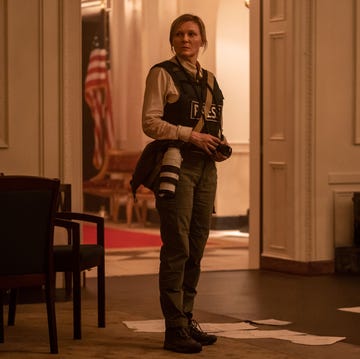
‘Civil War’ Review: Snap Unhappy
